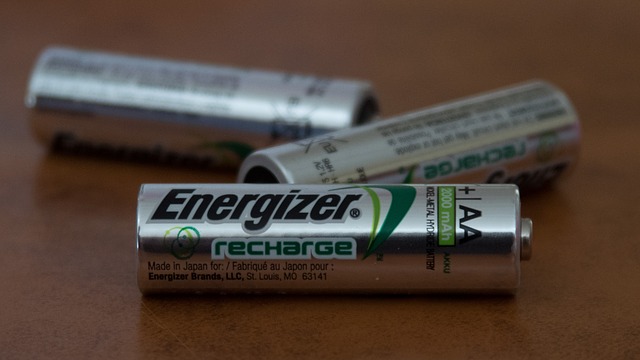Lipo Battery Pack Construction Definition, Characteristics, and Construction
Jan 04, 2020 Pageview:2228
What is Lipo battery pack construction?
lithium polymer battery (lipo battery) is a form of batteries that is rechargeable. It is based on lithium-ion technology. It is manufactured using a polymer electrolyte instead of the conventional liquid electrolyte. The LiPo batteries provide higher specific energy than conventional lithium batteries. They are very lightweight, that is why they are used in products where weight is a crucial feature, such as mobile phones, or radio-controlled aircraft.
LiPo batteries follow the footsteps of its predecessors Lithium-ion and Lithium-metal cells. Since the 1980s, this field has undergone numerous researches. Until in the year 1991 when Sony released its first commercial cylindrical Li-ion cell. That was the starting point of the achievements that have been done in the field since.
LiPo batteries are known for their superb "boost discharge capabilities".
Construction of the LiPo battery pack is as follows:
The Anode: the anode of the LiPo batteries is constructed using; aluminum foil current collector. Metal oxide active material (NMC, NCA, LCO, LFP). Binder (PVDF – Polyvinyl dine Fluoride). Conductive carbon (Acetylene black, Vulcan, graphite)
The Cathode: the cathode inside of a LiPo battery is constructed using; copper current collector. Graphite active material. Binder (PVDF, or CMC/SBR — carboxymethyl cellulose and styrene-butadiene rubber). Conductive carbon.
The Separator: this is a thin film layer constructed from polypropylene film, ionically conductive but electrically insulating, e.g. Celgard.
The Electrolyte: Just like any Li-ion battery, the LiPo battery contains an electrolyte constructed from, carbonate solvents including ethylene carbonate (EC), dimethyl carbonate (DMC), diethyl carbonate (DEC), propylene carbonate (PC). Lithium salt, e.g. lithium hexafluorophosphate (LiPF6).
The Pouch material: the pouch material inside of a LiPo battery is composed of aluminum with a polymer coating.
Tabs: these are connected to the cathode and the anode of the battery. The one connected to the anode is made from nickel, and the other one connected to the cathode is made from aluminum.
What are the characteristics of Lipo battery pack construction?
Li-ion polymer batteries have the same exact build-up setup as the Li-ion batteries. The only difference is that in the Li-ion polymer batteries a microporous electrolyte is used instead of the conventional porous separator. Moreover, Li-ion polymer batteries are contained in a flexible polymer casing, unlike the Li-ion batteries where they are contained in a plastic casing.
Discharging happens at a large rate when the device powered by the Lithium-ion battery is on; however, discharge also occurs even when the device is powered off. That is one downside for the Lithium-ion batteries.
LiPo batteries are lightweight and can be made in almost any shape and size. They have large capacities and can hold large charges in small packages. Moreover, they are good at marinating constant voltage as they discharge.
LiPo batteries are used on a very large scale. They are used in RC devices, including boats, drones, helicopters, cars, and any other devices that require their battery to be lightweight. They are also used in many electronics devices especially smartphones.
Up until this moment, LiPo batteries have the largest market share of any batteries there is on market, and we can say that there is almost no tech company that does not use them in at least one of their products.
They are used in all Personal Digital Assistants (PDAs) and Smartphones. There are now smartphones that can last up to two days of on-screen time. That is thanks to the huge development of Li-ion technology during the past decade.
Moreover, there is no digital camera today on the market that does not have a Li-ion polymer battery in it. Either a removable one or embedded one. The usage of Lithium-ion polymer batteries in digital cameras has increased the number of photos that can be taken between every charge dramatically. The same thing goes for Audio devices and recorders, nowadays sound engineers can record and enhance the sound in video conferences and concerts using portable audio devices that can last up to 10 hours of continuous usage.
How do you build your Lipo battery pack construction?
LiPo batteries are made from what are called cells. Every cell of those is composed of three components; a positive electrode, a negative electrode, and a chemical component called an electrolyte between the positive and negative ones.
The positive electrode in the cell is designed from Lithium-Cobalt oxide. The negative electrode is designed from graphite. The electrolytes are such as oxides and sulfides. The electrolyte must have a long shelf life and offer high mobility for Lithium ions. The electrolyte can be liquid, polymer, and solid-state ones.
Creating a LiPo battery follows some simple steps:
Electrode Preparation
In this step, the material that will be coated on the anode and the cathode is mixed and prepared.
Raw metallic materials, mostly aluminum, is loaded into the coating machine.
Thin layers of Lithium and Carbon are then applied and added to the machine.
Through a continuous process, the material is fed to an oven where Carbon is being treated.
After the oven process, the product is fed to two separate lines where the anode and the cathode are being fabricated each having its own line.
After the electrodes (anode and cathode) are fabricated, they are fed to a machine where they are being squashed to thin layers so that they can be more foldable.
The final step of this process is the cutting process where the electrodes are cut to the proper width specified by the manufacturer.
Electrode Creation
In this process, the electrodes are taken and rolled to the proper size.
Once the anode and cathode are cut to the perfect size, they are matched together in pairs of exactly equal sizes.
After that, a thin layer is inserted between them (the separator).
The whole three layers (the anode, the cathode, and the separator) are folded together in a semi-automatic machine.
Electrolyte insertion
After preparing the electrodes in the previous step. Housing for them is made.
Plastics or PVC materials are used to make the housing for the electrodes.
The electrodes are then inserted into those housings.
They get thermally welded together on three sides, while the fourth side is left open.
Via the open side, the electrolyte is inserted onto the whole setup.
After that, the open side is sealed.
Now you have a Li-ion battery that is ready for its first charge.
There are, however, some challenges that face the manufacturing of the Lithium-ion batteries industry. The cost of manufacturing Li-ion batteries on a large scale is so high it prevents manufacturers from seeking this dream more quickly.
If we look at the automotive market and electric vehicles, the cost of lithium-ion batteries is much higher than what that market could accept. It is high to the point that electric vehicles have not reached the point to replace conventional cars just yet. They are still more expensive.
Cost reduction is possible through something called the optimization of manufacturing schemes.
Another thing for cost reduction is the replacement of the NMP electrolyte inside the li-ion batteries with water. The cost of water as a solvent is negligible when compared to the NMP compound. Moreover, water is not flammable nor it has any flammable fumes, which makes it the safer choice than the NMP. The problem that faces the manufacturers with water is that water is a polar solvent, and what is needed in the battery is a non-polar solvent like the NMP. However, making water a non-polar solvent can be done via some chemical reactions and additives to it.
Researches are now focused on how to reduce the cost of the Li-ion batteries. We predict that the future holds great expectations and nearly, the cost will be so minimal that Li-ion batteries will be used everywhere, from the simple remote control to an airplane.
Leave Message
Hottest Categories
-
Hottest Industry News
-
Latest Industry News












